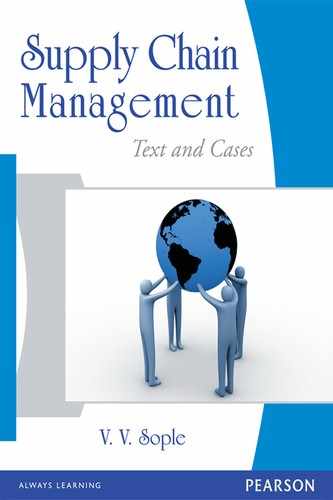Case 15
TRIKA Exports
Seeking Supply Chain Solution to Garment Exports
TRIKA is one of the leading exporters of garment from the Indian to the US and the European markets. The present set-up allows a production of up to a million pieces but the capacity of the back-end supply chain is limited thus slowing the entire process flow. Another impediment is the fabric or the cloth for the garment. If the fabric is locally sourced then the time to procure the cloth would take anywhere between 15 and 45 days, depending on the source. If it is imported (e.g. Fleece from Taiwan), it would mean another 15–30 days. So the sourcing process takes about 30–75 days.
Both logistics and supply chain play a very important role in the garment export business. Logistics is critical because most international retailers work on tight delivery schedules. TRIKA has to ensure that the goods are shipped at the right time. This implies that they have to manage their supply chain to ensure that raw materials are delivered quickly to their factories. The garment supply chain is very fragmented and of a small scale in nature. To ensure the quality and timely availability of all the materials is a great task. Moreover, depending on the order, the exporters also need to import some fabric and accessories from the international market. Supply chain issues, therefore, form the main link in the garment industry.
For embellishments like buttons, threads, zippers and so on, procurement takes between 7 and 25 days, high by any standards for the value of the items but, again, limited back-end supply chain capacities create a hurdle. Due to the nature of the demand pattern, TRIKA does not stock excess inventories as the fashion cycle keeps changing and exporters purchase the items based on the order.
Once the raw material are sourced, production, which comprises cutting, sewing, finishing, packaging and shipping, is usually completed in around 15 days. A typical garment export order fulfilment cycle is shown in Figure 1.
TRIKA is highly labour oriented, though in areas such as cutting, embroidery and trimming, mechanization has taken place. Overall, however, the industry still depends on labour for undertaking some of the major functions like sewing.
Cost Break-up
Material cost accounts for about 60 per cent, trims 10 per cent and labour 15 per cent of the total expenses (Figure 2).
Evidently, it is the material supply that has to be managed. However, here, the issues of capacities and sourcing have to be considered. TRIKA sources the fabric from the textile units and also from a fabric manufacturing unit in Daman. Even here, the production of the fabric takes around 30–45 days, as TRIKA has to develop the garments based on specifications provided by the retailer. The captive facility is quite small and can meet only 35 per cent of its requirements. The rest of the fabric has to be outsourced.
Fabric manufacturing involves a large capital expenditure in looms, cutting, finishing, printing and bleaching facilities. TRIKA has invested in a weaving facility with jacquard and dobby looms that cost around Rs. 50–55 crores.
TRIKA made efforts to improve efficiency by bringing down the inventory. They planned their inventory management in 4 stages as follows:
- Sales forecast clarity by understanding customers needs
- Standardization of production mix
- Standardization of vendors for purchasing dyes and recipes
- SAP implementation
The other major hurdle in supply chain is the logistical infrastructure, which is evident from Tables 1, 2 and 3.
TRIKA could get productivity improvement at each stage cumulating to 80 per cent. Even though TRIKA is internally strong with its system, there are more external factors which are bothering them much. An interesting feature of the garments industry is that they have a very short product life cycle but long lead times. Volatile fashion trends, low supplier reliability and longer supplier lead times characterize this business. This is because in this industry, supply chain is yet not fully integrated and forces the manufacturers to bear high inventory carrying and marking down costs.
With the global economic recession, supply chain management assumes utmost importance for TRIKA Exports. Value addition is another significant area and TRIKA Exports have to make efforts on this front. India has a huge base of designers several of whom have made it big in the international markets. TRIKA can introduce innovative designs to capture global markets. Innovations are needed in both fabrics and designs.
REVIEW QUESTIONS
- Discuss various issues in garment supply chain.
- What are the major supply chain problems faced by TRIKA?
- Suggest some strategy to overcome external factors faced by TRIKA.





